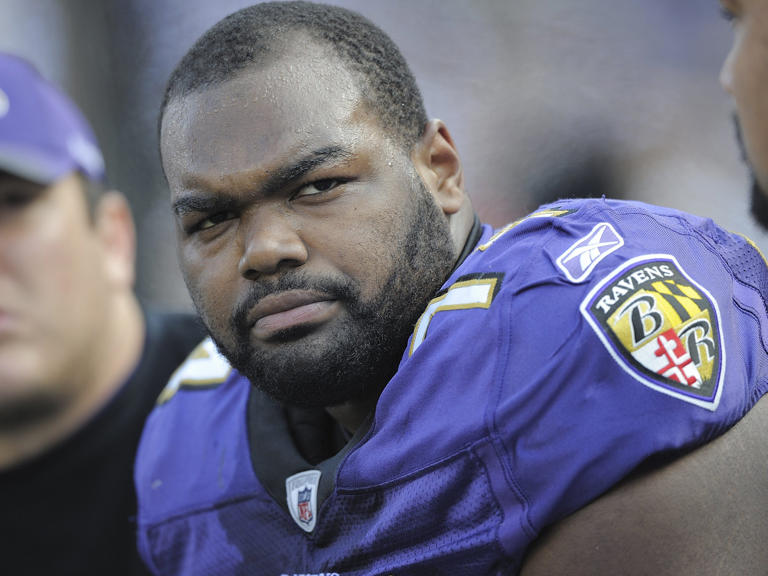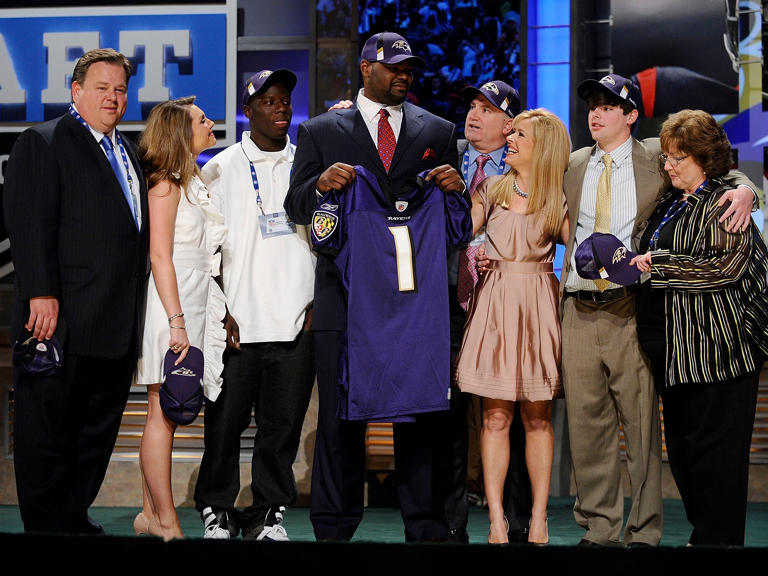Reprint from the Insider
Story by insider@insider.com (Yoonji Han) •8h
- Former NFL star Michael Oher alleged the Tuohy family ‘exploited’ him under a conservatorship.
- Under the conservatorship, the Tuohys had control over Oher’s legal, education, and medical decisions.
- The controversy exposes how ableism and racism can intersect to prop up a “white savior” narrative, some race and disability experts say.
The controversy over former NFL player Michael Oher’s conservatorship exposes how ableism and racism can sometimes work hand-in-hand to prop up a “white savior” narrative, where a white character saves a person of color from their troubles, according to race and disability experts.
On Monday, Oher filed court documents claiming that Sean and Leigh Anne Tuohy — who took him into their home when he was in high school — never actually adopted him. He alleged they instead tricked him into signing documents that entered him into a conservatorship once he turned 18 years old in 2004, using him as a “gullible” young man who could be “exploited for their own benefit,” the court filings said.
According to court documents, the conservatorship gave the Tuohys “total control” over Oher’s ability to “negotiate for or enter any contract,” including the deal that paid them and their children — but not Oher — millions of dollars in royalties from the critically-acclaimed 2009 film “The Blind Side.” (Sean Tuohy Jr., the son of the family, denied Oher’s allegations, and his father Sean Tuohy similarly described the claims as “insulting.”)
The conservatorship also gave the Tuohys legal control over Oher’s education and medical decisions — even though he had no known physical, mental, or emotional disabilities that would necessitate such an arrangement, according to the filing.
“A lot of racism is in fact disabling. The goal of racism is to present Black people or people of color as inherently disabled because of their race and therefore ‘less than,’ and therefore it’s more likely necessary to deprive them of their rights,” disability rights activist Imani Barbarin told Insider.
A ‘white savior’ narrative
The movie “The Blind Side” was a critical success, raking in over $300 million at the box office and earning an Oscar for Sandra Bullock, who played Leigh Anne Tuohy.
But the film has also been criticized for portraying the Tuohys as “white saviors” who swooped in to save Oher from the foster care system and helped cultivate his successful career in sports.
Over the years, Oher himself has voiced displeasure over “The Blind Side” because of how he felt it misrepresented him. In his memoir, he wrote that the film allowed people to believe that he was “so clueless about something I had always taken pride in being pretty smart about.”
“I felt like it portrayed me as dumb instead of as a kid who never had consistent academic instruction and ended up thriving once he got it,” Oher wrote.
The white savior trope is problematic because it “promotes white dominance and white superiority,” according to Chad Dion Lassiter, race relations expert and executive director of the Pennsylvania Human Relations Commission. Lassiter cited “The Help” and “The Green Book” as other examples of films promoting a white savior narrative.
“It seduces us into the Black-white binary of thinking that it’s the only way Black humanity can overcome the challenges they’re faced with,” Lassiter told Insider. “What’s absent from that narrative is the systemic and structural racism that creates all these conditions, like mass incarceration and trauma.”
Representatives for Oher and the Tuohy family did not immediately respond to requests for comment.
Ableism, racism, and conservatorships
Some disability activists said the question of whether Oher was mentally disabled or not misses the point.
“Nobody should be treated like that, deprived of your autonomy. Even disabled people shouldn’t be treated this way,” Barbarin said, referring to conservatorships and how they can frame people as being disabled and incapable.
In most states, under a conservatorship, courts appoint an individual to make decisions on behalf of a person because they are considered incapacitated and no longer competent to manage their own affairs.
In the movie, the character of Oher was painted as someone who needed to be rescued by white foster parents. In real life, Oher was placed under a conservatorship that saw him as incapable of managing his own affairs.
Racism and ableism work hand-in-hand when it comes to the Tuohys’ conservatorship of Oher, according to some experts.
“Marginalization is rendering something or someone into a non-entity,” Lassiter said. “Ableism comes in and intersects with it by saying, ‘They’re not human anyway,’ or ‘They have all these deficits.'”
Barbarin emphasized that the “weaponization of disability is the point,” explaining how disability can be weaponized against any group that has been systemically marginalized, whether it’s through racism, sexism, or homophobia.
Both Barbarin and Lassiter say it’s crucial to consider the structural forces at play. Otherwise, discriminatory forces like ableism can be used to perpetuate other biases.
“The ableism connected to racism is the idea of, ‘You can’t survive without me as the white savior helping you,'” Lassiter said. “It doesn’t address the systemic and structural racism. It simply says, ‘You need my help. My whiteness and my privilege is going to help you become something you can’t become on your own.'”


